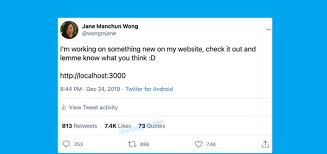After rolling out a new way to display a full listing of both ‘Retweets’ and ‘Retweets with Comments’ back in May, Twitter now looks to be testing another new variation, which would list ‘Retweets’ and ‘Quotes’ – or ‘Retweets with Comment’ – in their own separate sections.
As you can see in this example, posted by reverse engineering expert Jane Manchun Wong, rather than putting all of your retweet variations together, the new display would make it easier to see each and go through them as you need.
As noted, Twitter’s been working on improvements for its engagement displays over the last few months, with this (below) being the current iteration.
Tapping on that then enables the user to see separate counts of Retweets and Retweets with Comments, but this new variation would take out that middle step, making it easier to see, from the initial tweet, what the split between each is.
It could become another version of the now-infamous tweet ratio – the tweet ratio, as you would expect, relates to the difference between Likes and retweets, but the variance between the two often communicates its own meaning.
As per Dictionary.com:
“On the social media platform Twitter, a ratio, or getting ratioed, is when replies to a tweet vastly outnumber likes or retweets. This means people are objecting to the tweet and considering its content bad.”
Maybe, quote tweets could be another variation of this – if a tweet has a lot of quote tweets, but few likes, that’s probably a similar indicator.
Either way, it seems like a logical addition, taking out that extra step of tapping through, within minimal disruption to the current tweet formatting.
In addition to this, Wong has also shared that Twitter is adding new warnings when people go to add special characters to their usernames.
This is good general advice for emoji use – if you’re going to add emojis, consider that screen-readers will literally explain the emoji to the user. That means that if you use the same emoji several times – you get the picture. You can imagine the annoyance.
